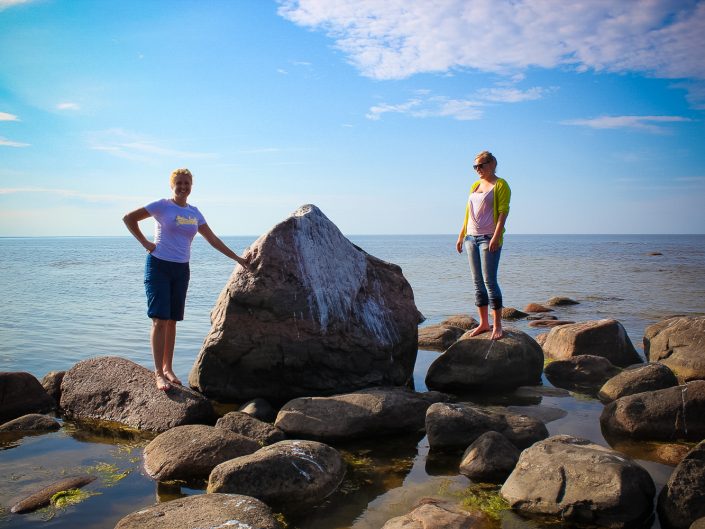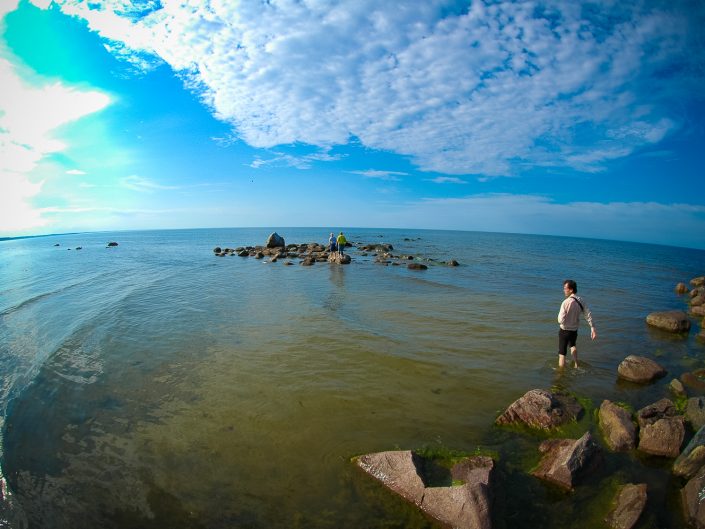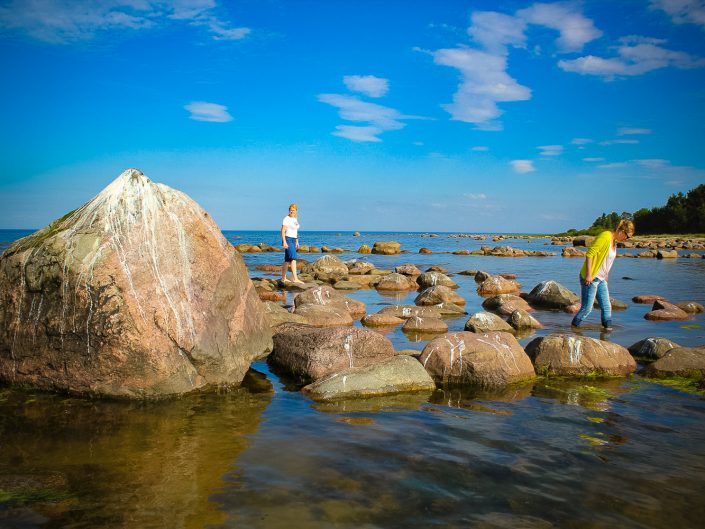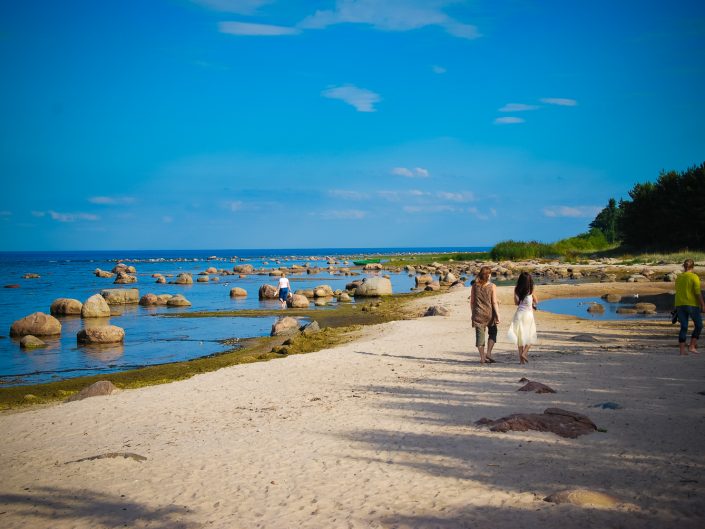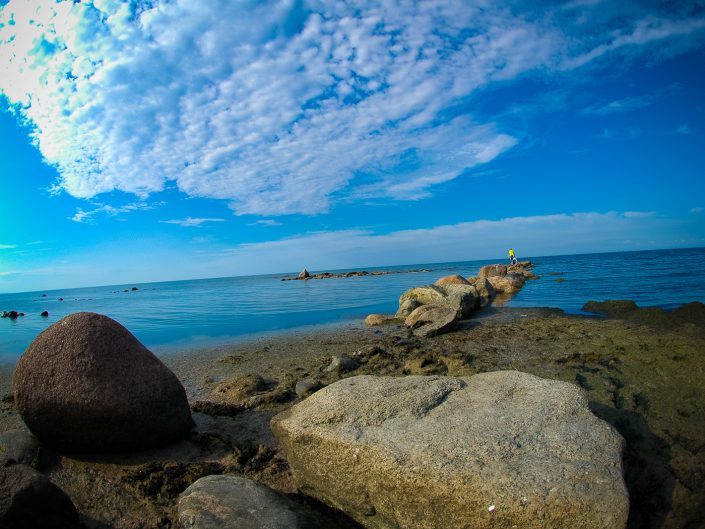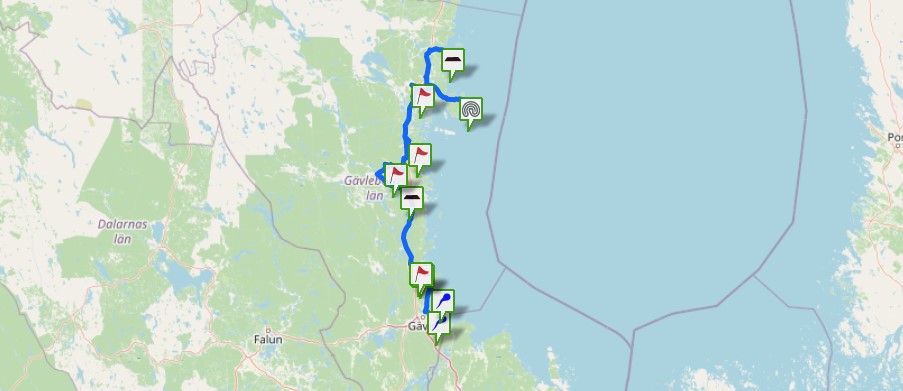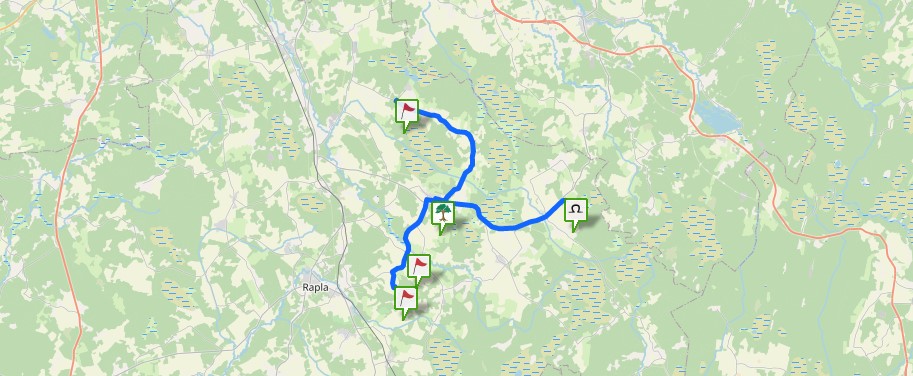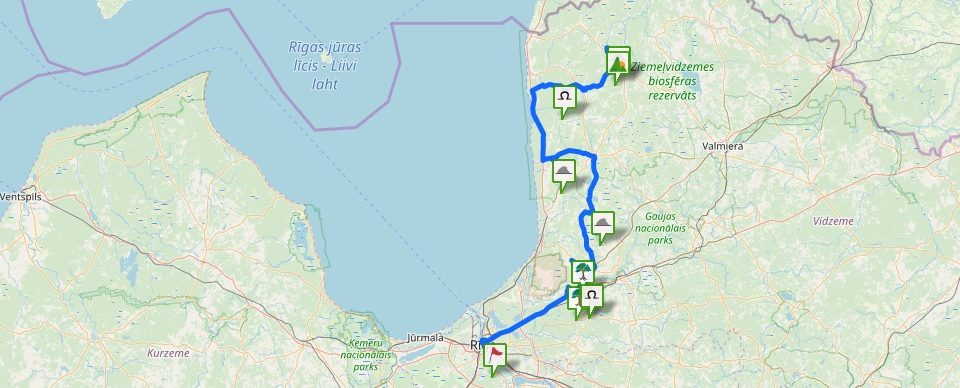As to its size, the quite undistinguished stone with a a sharp peak is about 2 m high. It is well visible from the seashore, because in the stone cape it is the largest one. According to its size, it is not a great stone at all, but it is interesting as a cultural-historical, mythological stone that adds well to the landscape.
The tale narrates that the stone cape appeared when the Devil was building a bridge across the Gulf of Riga.
In Latvian tales and legends the Devil is often depicted as being tall, thus it is related with large stones. The Devil is only partially human, it has also cow’s tail, billy goat’s legs and horns. The Devil in Latvian mythology is one of the most complicated images, because in folklore the Devil is described from three different perspectives. First of all, the Devil was created as a God’s counterpart during the creation and arrangement of the universe, also a close God’s neighbour. Between those two personalities there are no drastic differences so far. Secondly, the Devil is an active companion in the everyday routine of the Latvian farmers. Also here the Devil’s mischief is not all-embracing, it is rather related to a certain place and household issue. A human can win out such a Devil with his quick wit and courage. Thirdly, the Devil embodies all unlimited evil, the power that humans come across in all their household issues, an absolute antipode to God. This Devil’s image had appeared largely under the influence of Christianity. Characteristics attributed to the Devil in tales and legends have often been wound together — Devil’s enormous physical strength, as well as simplemindedness and stupidity often go together with pronounced evilness and slyness. The Devil both bothers, deceives and fools humans, but at the end it turns out that the humans are still superior to the Devil due to their imagination and quick wit.
